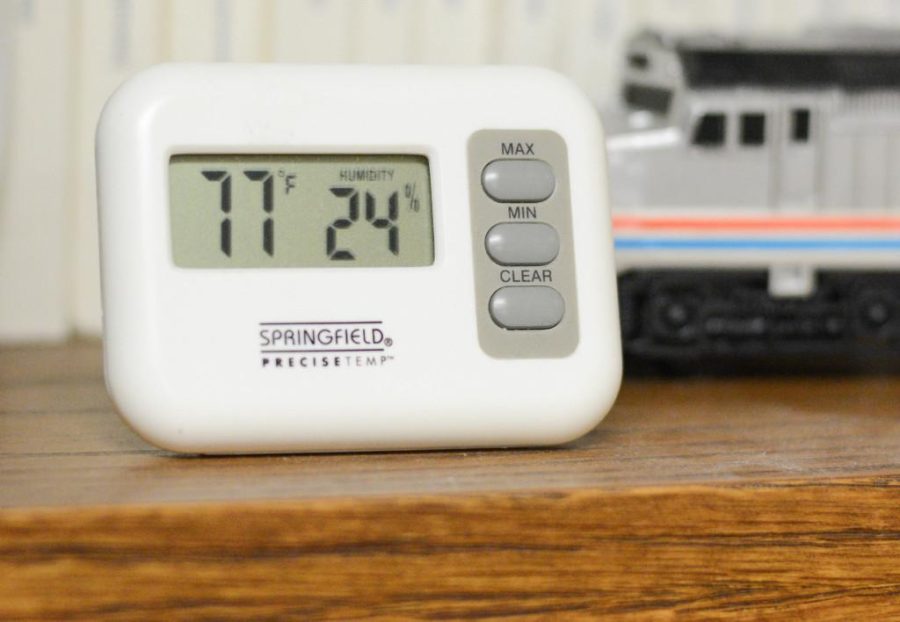Story by Sabra Jackson, Contributing writer
While most homes have a switch to control the air conditioning and heating unit, Murray State works on an entirely different system which makes the buildings hot and difficult for students to focus in during class.
According to The Murray State News Twitter poll, 92 percent of students said the hot classrooms affect their ability to focus in class. Eight percent said the temperature of the classroom did not affect their learning.
“Around two weeks ago, all the doors were open to the engineering building because it was so humid in the classrooms,” said Nick Martens, freshman from Niles, Illinois.
Martens said he is in the engineering building often and the humidity causes him to get tired, making it difficult to focus.
Marc Polizzi, assistant professor of humanities and fine arts, said his office is usually 60 degrees in the summer and in the winter is around 86 degrees. He usually has up to three fans on, keeping the room between 76-78 degrees to make the room bearable.
“They came in one day and said all of our exhaust ports were closed,” Polizzi said. “Essentially, the heat was just trapped here.”
Sometimes, faculty members are able to leave early and work from home because the heat makes it too difficult to prepare for lessons, Polizzi said.
Polizzi said that it can get uncomfortable to teach and the heat makes him feel dehydrated. The earliest he has let out is fifteen minutes, but there are some professors who have let their classes out even earlier.
Rick Grogan, director of Building and Grounds Maintenance, said, “We wish it was as easy as flipping a switch, but it’s really a two-to-three-day process to convert over from one to the other.”
David Burdett, chief facilities manager, said the university is using boilers for heat or chillers for air conditioning and it takes up to three days to make the switch from one to the other.
From October or November through March, the university is at the mercy of two boilers to heat 90 percent of the academic buildings. As far as residential colleges go, the residence director can control his or her own system in each building.
The director and resident advisors are in close correspondence with Bobby Daniels, operations supervisor, when it comes to switching the operation over to the boiler or chiller.
The boiler uses natural gas, which heats the circulating water. The steam from the water heats the buildings.
This past January, a manhole was blocked off in front of Waterfield Library. Burdett said that a steam line had broke. It took three days to get the boiler cool enough to send someone into the manhole to get the line fixed.
“We had to shut it off on Friday to allow time for it to cool by Monday where we could get into a manhole and actually do the work,” Burdette said.
The reason some of the classrooms get warm in particular because the VAV (variable air volumizers) are not allowing for sufficient air flow. Due to this weather being incredibly unusual, facilities management is having a difficult time regulating the airflow.
The classrooms can also be warmer or cooler depending on where they are in the building.
Grogan said if the classroom is on the south side, it will usually be warmer than the rooms on the north side of the building because of where they are in location to the sun.
Facilities Management staff typically switch over to the chiller when it is 80 degrees for three days straight, depending on the time of the year. They usually avoid the switch during finals week and other busy times.




























































































